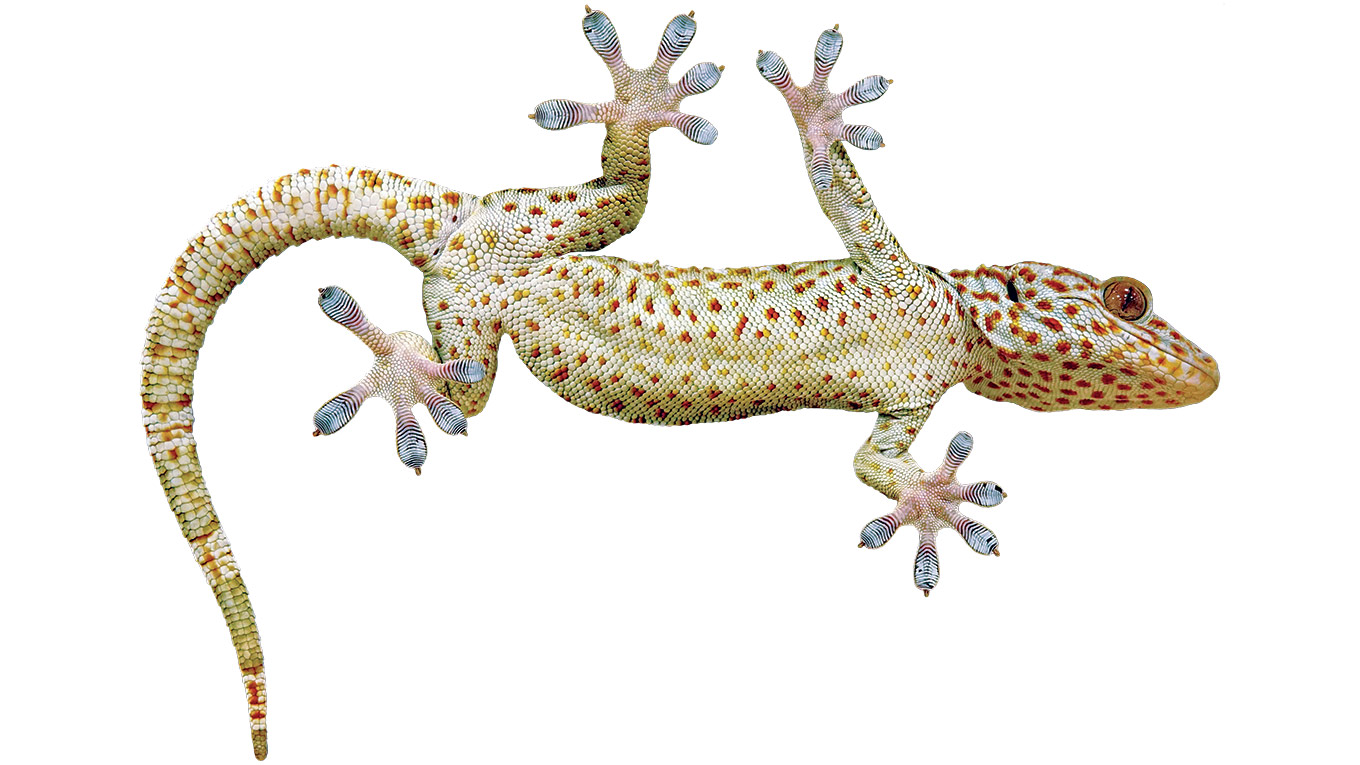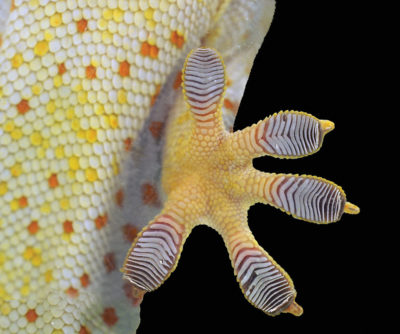
It’s all in the toes
Geckos are known for their ability to nimbly scale walls and climb a variety of surfaces. Now, a study from a team led by Robert Full, professor of electrical engineering and computer sciences and of integrative biology, working in collaboration with researchers from Nanjing University of Aeronautics and Astronautics, has determined exactly how the geckos’ flexible, hairy toes allow them to make quick adjustments that accommodate shifting weight and slippery surfaces.
As Full’s previous research showed, geckos’ toes can stick to the smoothest surfaces through the use of intermolecular forces, and uncurl and peel in milliseconds. Their toes also have up to 15,000 hairs per foot, allowing for close surface contact.
To determine how geckos navigate different surfaces, visiting graduate student Yi Song ran geckos sideways along a vertical wall while making high-speed video recordings to show the orientation of their toes and measure the area of contact of each.
The researchers found that geckos ran sideways just as fast as they climbed upward, easily and quickly realigning their toes against gravity. During sideways wall-running, the toes of the front and hind top feet shifted upward and acted just like toes of the front feet during climbing.
Having multiple, soft toes allowed geckos to navigate slippery areas and irregular surfaces. Toes that still had contact with the surface would reorient and distribute the load, while the softness let them conform to rough surfaces. Researchers say these findings could lead to new design ideas for climbing robots.
Read more: To climb like a gecko, robots need toes

